LWVS Asks Scarsdale BOE for Clarification on Scarsdale Schools Education Foundation
- Details
- Hits: 4338
 Unanswered questions about the newly formed Scarsdale Schools Education Foundation abound and this was the subject of a statement read at the Board of Education meeting on Monday night December 9 by LWVS President Susie Rush and League Board member Deb Morel. The statement focused on the process that the Board of Education and the Superintendent will use to allocate foundation grants and on the Board and administration's transparency with the community.
Unanswered questions about the newly formed Scarsdale Schools Education Foundation abound and this was the subject of a statement read at the Board of Education meeting on Monday night December 9 by LWVS President Susie Rush and League Board member Deb Morel. The statement focused on the process that the Board of Education and the Superintendent will use to allocate foundation grants and on the Board and administration's transparency with the community.
The newly-formed Scarsdale Schools Education Foundation announced their first gift to the schools of $90,000 at the October 7, 2014 meeting of the Board of Education. The funds were given to the Center for Innovation at Scarsdale High School, to the Middle School for interactive games and to the elementary schools for the "makerspace program." At that time, residents had questions about the Foundation's fundraising efforts and the process for evaluating grant applications and making awards. Foundation President Ellen Miller-Wachtell said that the Foundation would make a presentation at an upcoming board meeting. Now Board of Education President Suzanne Seiden has said that the Foundation's presentation is scheduled for January 13, 2014.
Below is the statement from the League of Women Voters of Scarsdale
Background
In 2010, the League of Women Voters of Scarsdale (the League) completed a study and evaluation on whether an education foundation should be established in Scarsdale as a source of funding to supplement the taxpayer-approved school budget. Although we were unable to reach consensus at that time on whether an education foundation should be established, we issued a statement in which, among other things, we made certain observations, including the following:
"If an education foundation were to be established, significant checks and balances must be addressed in defining the role of an education foundation and its governance."; and
"It is important that the board of education be involved in the grant process of the foundation to safeguard the priorities of the school district as formulated by the board of education and the superintendent of schools."
It is with those observations in mind that we make this statement.
It should be noted that we are not commenting on the composition, governance, mission, or process of the Scarsdale Schools Education Foundation (SSEF) nor do we ask that private deliberations of the SSEF be made public. We understand that the SSEF is a private entity, which does not have the same obligations to the public as does the Board of Education (BOE). The BOE has a responsibility to the community to act with transparency, including providing relevant information to the public, subject to any legal restrictions that may limit disclosure by the BOE, which restrictions are beyond our purview. Further, the BOE is duty-bound to engage in public deliberation and public discussion, and to give the public an opportunity to observe the BOE's decision-making process and to weigh in on its deliberations. As elected officials, school board members are accountable to the public.
The presentation by the SSEF and acceptance by the BOE at a BOE meeting in October of an aggregate gift of $90,000, although generously given and gratefully accepted by the BOE, was a surprise to the League, and we understand to many in the community as well, given the absence of meaningful public deliberation by the BOE prior to the presentation of the gift.
Observations
To our knowledge, since the establishment of the SSEF, there has not been a meaningful public discussion by the BOE of district priorities with regard to the SSEF, how gifts from the SSEF will be consistent with the district priorities as formulated by the BOE and the Superintendent, or what procedures are in place for the safeguarding of those priorities. Nor has there been public disclosure of the BOE's formal relationship to the SSEF or explanation as to how gifts from the SSEF fit within existing gift policies adopted by the BOE.
The foregoing observations are based on a review of accounts of BOE meetings as they appeared in the Scarsdale Inquirer, scarsdale10583.com, and other electronic media. We did not undertake a review of the minutes of the BOE meetings. We have reviewed BOE policies relating to gifts as posted on the district's website.
Recommendations
As a nonpartisan political organization dedicated to promoting the informed and active participation of citizens in government, we seek, among other things, to ensure that all levels of government keep their citizens informed. Given the nature of the newly established foundation, we ask the BOE for clarification regarding the following matters to gain a better understanding of the relationship between the BOE and district administration and the SSEF:
- the priorities of the district as currently formulated by the BOE and the Superintendent and how determination will be made as to whether gifts from the SSEF are consistent with those priorities, and whether the gifts are appropriate for funding by a private entity versus the school district;
- the process for vetting projects proposed and approved for funding by SSEF, including criteria to be utilized and consideration of the impact of implementation of a project on the school budget in subsequent years, and assessment of the project following its implementation in the schools;
- how current policies adopted by the BOE in relation to gifts to the district apply to gifts to the district by the SSEF, paying particular attention to the BOE's policies regarding "any semblance of influence over programs or activities sponsored or conducted" by the district and policies in relation to community fundraising;
- the role of the Superintendent vis à vis the SSEF; and
- the role of the BOE liaisons to the SSEF and their reporting obligations to the BOE and to the public.
In addition, we recommend that a formal presentation to the BOE by the SSEF be included as an agenda item at a BOE meeting in the near future and that the BOE engage in a public discussion regarding its relationship to the SSEF and its philosophy regarding consideration and acceptance of gifts by the SSEF to the district, including the items identified above. We urge the BOE to publicly disclose the memorandum of understanding between the two entities formally setting forth their relationship and obligations.
We also suggest that the BOE consider developing and adopting a new policy, specific to gifts given by the SSEF to the district, in light of the new and unique relationship between the BOE and the SSEF.
The League recognizes that current and past members of the BOE have likely expended considerable energy in exploring the establishment of an education foundation in Scarsdale. The League believes, however, that the school district and the community would benefit from a more transparent process and one that schedules opportunities to engage the community.
To that end, the League hopes that the BOE will promote an ongoing dialogue with residents as the BOE had envisioned when it began considering an education foundation and provide the public the benefit of hearing board members' thinking as the BOE moves forward in defining its relationship with the SSEF and safeguarding the formulation of the district's priorities. The League encourages the BOE and district administration to remain committed to the high standards of openness and transparency that we have come to expect.
LEAGUE OF WOMEN VOTERS OF SCARSDALE
BOARD OF DIRECTORS
By: ________________________________
Susie Rush, President
Packed Trains on the Harlem Line After Tragedy at Spuyten Duyvil
- Details
- Hits: 3780
 Due to the tragic accident that shut down a portion of Metro North's Hudson line early Sunday morning, commuters on the Harlem line should expect crowded trains this week. In order to accommodate some of the 26,000 commuters who ride the Hudson line, officials have made special arrangements to serve these commuters on the Harlem line – and commuters have already reported packed trains at Hartsdale and Scarsdale stations this morning. One commuter, on a 7 am train from Hartsdale on Monday morning, said that the train arrived almost full and there were few seats available for Hartsdale and Scarsdale commuters.
Due to the tragic accident that shut down a portion of Metro North's Hudson line early Sunday morning, commuters on the Harlem line should expect crowded trains this week. In order to accommodate some of the 26,000 commuters who ride the Hudson line, officials have made special arrangements to serve these commuters on the Harlem line – and commuters have already reported packed trains at Hartsdale and Scarsdale stations this morning. One commuter, on a 7 am train from Hartsdale on Monday morning, said that the train arrived almost full and there were few seats available for Hartsdale and Scarsdale commuters.
Service between Tarrytown and Grand Central is now suspended, and may not be restored for a week. Until then, the following special arrangements have been made:
- Free parking is available at the Kensico Dam in Valhalla which is walking distance to the Valhalla Station.
- Additional cars can be accommodated at the Galleria West Parking lot on Main Street in White Plains.
- Free bus service is available between White Plains and Tarrytown stations to allow Hudson line commuters to travel from White Plains.
According to Metro North spokeswoman Marjorie Anders, extra passenger cars are available at Grand Central Station to be added to Harlem line trains if the trains become overcrowded and many of the trains that ran today included extra cars. The current schedule can be viewed here.
The Metro North Commuter Council issued the following statement expressing their concern about safety on the trains.
The Metro-North Railroad Commuter Council (MNRCC) is greatly troubled by this morning's derailment of a New York-bound Hudson Line train. This incident is particularly concerning in view of three major incidents that have occurred on Metro-North during 2013, including the May 17 derailment of a New Haven Line train that resulted in a collision of two trains near Bridgeport, Connecticut, the May 28 death of a track foreman that occurred when a train was erroneously routed onto a track under repair, and the July 18 derailment of a CSX freight train at a location near today's derailment.
The MNRCC calls for a prompt investigation into the cause of today's incident and for the MTA and the Metro-North Railroad to take all necessary steps to ensure that the risk to their passengers from similar failures is minimized. "The riders whom we represent must be assured they are safe when they travel on a Metro-North train, but their confidence in the Railroad has been shaken. Metro-North management must act decisively to ensure that incidents like those that the failures that have occurred this year do not occur again," said MNRCC Chair Randolph Glucksman.
The MNRCC extends its deepest sympathies to the families and loved ones of those who lost their lives in this morning's derailment and its wishes for the full recovery of those who were injured in the incident.
How was your commute? Post your comments below: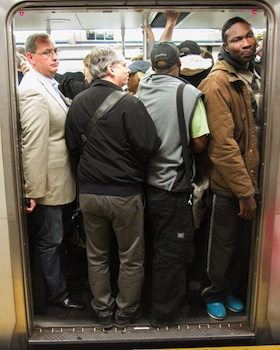
A New and Novel Whole Foods Opens in Port Chester
- Details
- Written by: Dina Braun
- Hits: 8488
 I was excited to hear that another Whole Foods Market recently opened in the Kohl's Shopping Center right off Route 95 in Port Chester and decided to check it out. I was pleasantly surprised to find many new offerings – including prepared food stations where you can select a meal to take home, an in-house smoker and Whole Food first wood-fired pizza oven. All of these new food stations made it well worth the trip on the highway and I have gone back several times since my first visit.
I was excited to hear that another Whole Foods Market recently opened in the Kohl's Shopping Center right off Route 95 in Port Chester and decided to check it out. I was pleasantly surprised to find many new offerings – including prepared food stations where you can select a meal to take home, an in-house smoker and Whole Food first wood-fired pizza oven. All of these new food stations made it well worth the trip on the highway and I have gone back several times since my first visit.
We didn't get too far inside before we spotted the Coffee and Juice bar where we found a tempting array of freshly baked pastries, coffee, and a variety of pure pressed juice blends. My son tried the pressed orange juice and though the price was steep - $6.00 for a 16 oz. cup, --he truly enjoyed it.
As we made our way past the floral arrangements and fresh produce, we came across wooden crates stocked with a wide variety of home-made pastas including southwestern orzo and whole wheat penne. There were also self-serve bins of domestically-sourced bulk frozen fruit and veggies allowing you to buy just the amount you need.
 Along with an impressive variety of fresh seafood, there is a large meat and poultry department with an in-house smoker offering pre-smoked meats including sausage, bacon, turkey legs, wings and meatloaf. I purchased a small sampling of the smoked wings at the food buffet and they were delicious, just the right amount of smoked flavor and tender, moist meat.
Along with an impressive variety of fresh seafood, there is a large meat and poultry department with an in-house smoker offering pre-smoked meats including sausage, bacon, turkey legs, wings and meatloaf. I purchased a small sampling of the smoked wings at the food buffet and they were delicious, just the right amount of smoked flavor and tender, moist meat.
Another stand out display in the store is the beer section offering local and American craft beers. Whole Foods works with several local  breweries including Captain Lawrence who has created a beer just for the Port Chester store. The variety is quite impressive, take a look.
breweries including Captain Lawrence who has created a beer just for the Port Chester store. The variety is quite impressive, take a look.
The cheese section of the store is quite large and there are hundreds of cheese options from all over the world. I enjoyed sampling the varieties on hand.
There are several hot and cold prepared foods available including Indian, Italian and BBQ. There are also various food items made to order. Although I have never been overly impressed with the prepared foods in the White Plains location, a few of the stations truly impressed me.
One station is called Fire and Pollo which offers chicken meals built to order. This station has fresh made tortas, tacos, chips, salsa and guacamole. A half chicken meal is $10 and that includes 2 sides and 2 corn tortillas. There is a Chopped, Topped and Wrapped station where you can choose toppings to create a salad, wrap or hummus bowl.
 Also appealing is the pizza station that offers both Roman style square flat pizza and traditional round pies from a wood burning fire oven. This is the first wood fire oven for Whole Foods in the tri-state area.
Also appealing is the pizza station that offers both Roman style square flat pizza and traditional round pies from a wood burning fire oven. This is the first wood fire oven for Whole Foods in the tri-state area.
Along with a large display of desserts and breakfast treats, there is a Waffle Bar station offering waffles made fresh to order with your choice of toppings. My boys and I enjoyed a seasonal favorite, a pumpkin waffle drizzled with caramel sauce.
The chefs are making fresh food options daily and there is full catering menu for private events. And if you want to order in advance and drive by, the Port Chester store is offering curb side pick so you don't need to get out of the car.
Although there are currently a few Whole Foods Markets in Westchester County, this store has some terrific additions and makes grocery shopping a fun, and filling family outing.
Whole Foods Market
575 Boston Post Road
Port Chester, NY
(914) 708-1985
Open Monday through Sunday 8 am to 10 pm
CNC Winners and Scarsdale General Election Results
- Details
- Hits: 4226
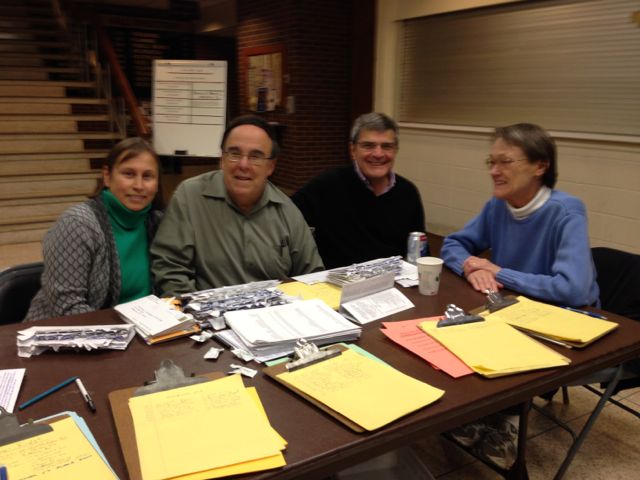 Procedure Committee Chairs Eli Mattioli and Howie Nadel announced the winners of the 2013 Scarsdale Citizens Nominating Committee election on November 13, 2013.
Procedure Committee Chairs Eli Mattioli and Howie Nadel announced the winners of the 2013 Scarsdale Citizens Nominating Committee election on November 13, 2013.
The following have been elected to serve three-year terms on the Nominating Committee:
- Edgewood - Elissa Bookner and Charles Chesnut (62 votes cast)
- Fox Meadow - Max Grudin and Joan Mazur Kapner (107 votes cast)
- Greenacres - John Baer and Barry Klayman (103 votes cast)
- Heathcote - David Brodsky and Daniel Finger (59 votes cast)
- Quaker Ridge - Diane Chesler and Julie Weinstein (24 votes cast)
The total vote count was 355 ballots, including mail-ins and those cast at Village Hall.
In addition, Scarsdale Village Clerk Donna Conkling released the voting results from the election on Tuesday November 5. The vote for County Executive was almost evenly split, with Bramson edging out a victory with 52.5% of the vote over Astorino's 47.4%. Among Scarsdale voters former Mayor Miriam Flisser lost in her bid for County Legislator by the same margin, with Boykin taking 52% of the Scarsdale vote over Flisser's 48%.
Here's how the votes went in Scarsdale:
Westchester County Executive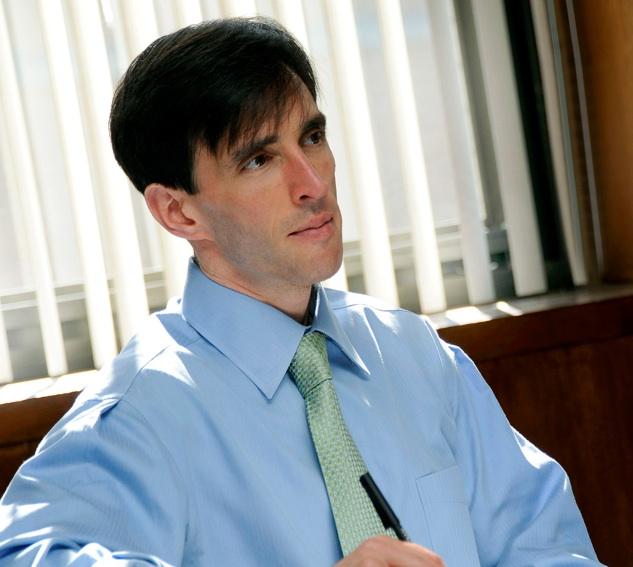
Noam Bramson: Democratic Line: 1,803
Rob Astorino: Republican Line: 1,563
Rob Astorino: Conservative Line: 124
Noam Bramson: World Worker's Party Line: 33
Noam Bramson: Independent Party Line: 36
Total Votes Astorino: 1,687: 47.4%
Total Votes Bramson: 1,872: 52.5%
Westchester County Legislator:
Ben Boykin: Democratic Line: 1,713
Miriam Flisser: Republican Line: 1,519
Miriam Flisser: Conservative Line: 139
Ben Boykin: World Worker's Party Line: 37
Ben Boykin: Independent Party Line: 48
Total Votes Ben Boykin 1,798: 52%
Total Votes: Miriam Flisser: 1,658: 48%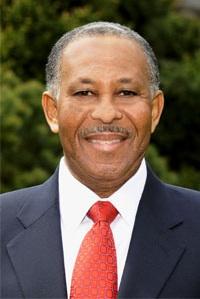
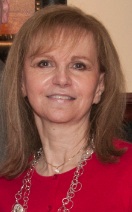
If You Build It, They'll Run Away
- Details
- Hits: 6325
 This letter was sent to Scarsdale10583 by Ronald Binday of Advocate Brokerage in Scarsdale: Westchester County, and Scarsdale in particular, developed from New York's rural and agricultural hinterlands into the city's most beautiful suburbs beginning more than a century ago.
This letter was sent to Scarsdale10583 by Ronald Binday of Advocate Brokerage in Scarsdale: Westchester County, and Scarsdale in particular, developed from New York's rural and agricultural hinterlands into the city's most beautiful suburbs beginning more than a century ago.
Farms and summer estates gave way to towns and villages where people of taste and refinement built businesses and homes that reflected their best visions of what a hometown should be.
Scarsdale, one 1920s historical booklet notes, was hallmarked by an "attractive, homogeneous Tudor business district surrounded by beautiful private residences." It has stayed that was, pretty much, thanks to citizens and officials who wish to maintain the high standards of construction and aesthetics that have served us so well.
And then there's 1 Palmer Avenue, at our most important central crossroads, the "Five Corners," where we go to shop and dine, and where many no doubt glean their dominant impression of Scarsdale. This location is not the Village, to be sure, but it is our alternate "downtown," and should display the best Scarsdale has to offer.
Instead, it's now overwhelmed by an ugly building that didn't have to be that way.
We all know the story: a highly-praised international architecture firm whose first name on its shingle lives in Scarsdale collaborated with an esteemed local developer, won approval for a multipurpose new building that would replace a tired, old gas station and offer new services to the Scarsdale.
The anchor tenant was to be a Seasons store, a high-end grocer specializing in kosher food, and it would be right across the parking lot from Balducci's, another fine food vendor that serves Scarsdale's discriminating gustatory needs. For the local consumer, the juxtaposition of the stores meant easy, one-stop shopping for all gourmet tastes.
As proposed, the home of Seasons would have closely modeled traditional Scarsdale, with appropriate design accents tracking the Tudor theme prevalent in town, and an architectural aesthetic that would please the eye of neighbor and stranger alike.
Ha!
Those of us who watch Washington these days are familiar with marvelous concept yielding to miserable execution; and so it is in Scarsdale, as well. 1 Palmer Avenue diverges significantly from the plan presented and approved more than three years ago, earning it 11 violations from the Village for departures from what was approved by the Board of Architectural Review. The litany of unsightly discrepancies includes changes to the roofline, railings, windows, doors and lighting – and none of them for the better.
The result today is an empty, nasty-looking monstrosity, out of sync with its surroundings and unlikely to be embraced by the tasteful community it was built to serve.
This building certainly did not take its cue from its neighbors. Caddy corner across the road sites Real Living Five Corners Real Estate in a beautifully restored Italian Renaissance-style building that was formerly home to the Scarsdale Volunteer Ambulance Corps, and a century ago was built as the local depot of the New York, Westchester and Boston Railroad. Its recent restoration is a testament of love and respect for the building and the town.
And diagonally across the street in a grand and classic Tudor building, elegantly utilized, is Massa, formerly Heathcote Tavern, and before that Charlie Brown's. This amazing building is one of the most stunning in all of Scarsdale, and has a most varied history as a restaurant, tavern and inn, among other interesting uses.
(One caveat is the four-story apartment building proposed as an addition to the Massa property; we sincerely hope that its developer will pay attention to the beauty of its surroundings and Scarsdale as a whole. In any case, the wonderful and historic buildings at the Five Corners deserve to be in better company than the new 1 Palmer Avenue has afforded them today.)
When other projects in other towns have gone astray, we've seen architects, builders and officials point fingers at each other and litigate long into the future about who was responsible and who should pay. We hope that doesn't happen here. What we'd like to see is a building made right; a new facade reflecting community standards, a roof rebuilt to hide the mechanicals that were never supposed to offend our eyes, and a new structure to emerge that adheres to both what was approved and to the spirit of Scarsdale.
The old saying that "if you build it they will come" has obviously not worked with 1 Palmer Avenue, at least for tenants. Instead, those who hate the building have come out to say so, and their public declarations should be heeded.
We live in one of the best communities in the United States. Let's strive to hold onto our standards, and let's make sure that 1 Palmer Avenue is compelled to meet them.










